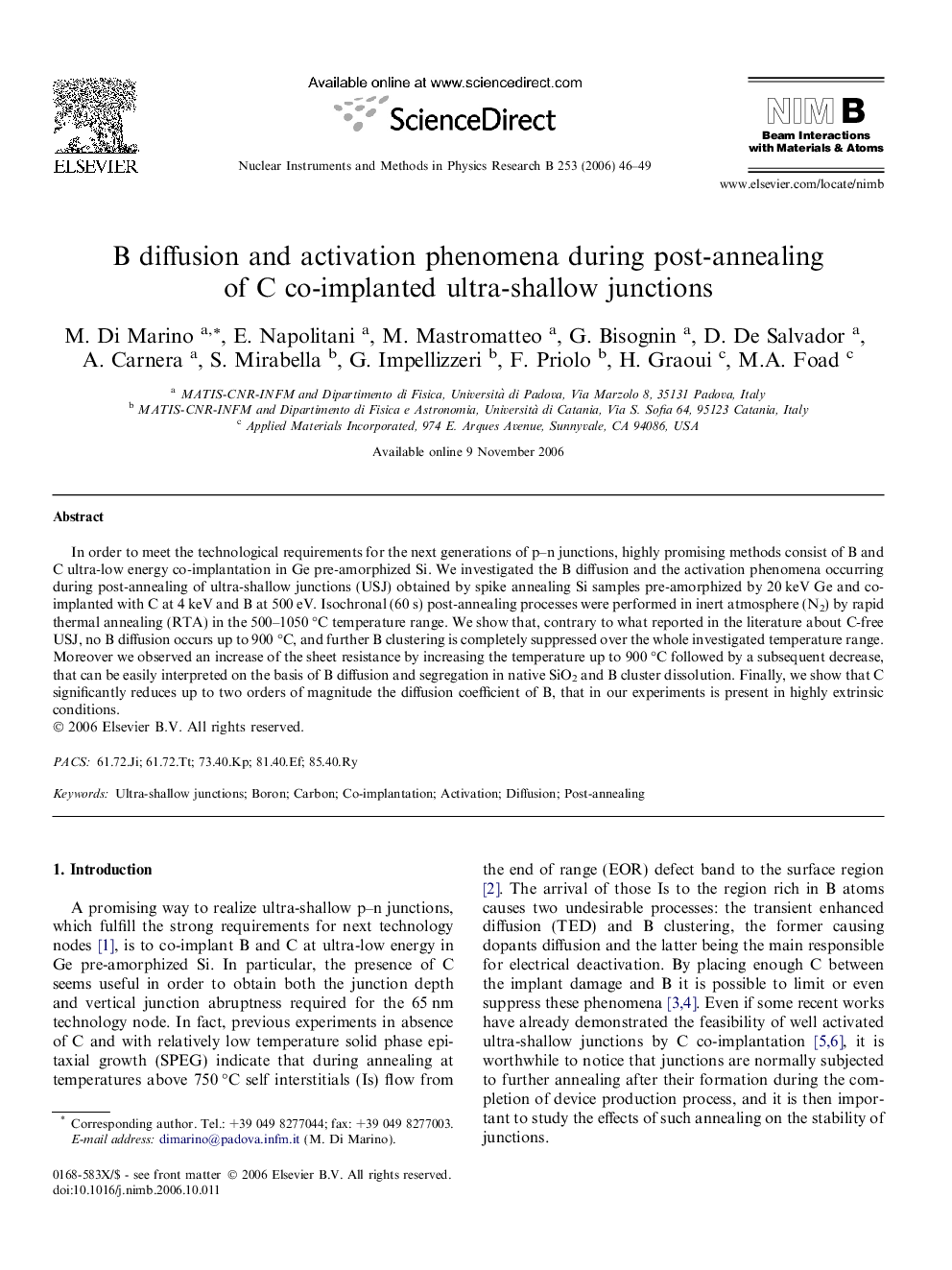| Article ID | Journal | Published Year | Pages | File Type |
|---|---|---|---|---|
| 1687920 | Nuclear Instruments and Methods in Physics Research Section B: Beam Interactions with Materials and Atoms | 2006 | 4 Pages |
In order to meet the technological requirements for the next generations of p–n junctions, highly promising methods consist of B and C ultra-low energy co-implantation in Ge pre-amorphized Si. We investigated the B diffusion and the activation phenomena occurring during post-annealing of ultra-shallow junctions (USJ) obtained by spike annealing Si samples pre-amorphized by 20 keV Ge and co-implanted with C at 4 keV and B at 500 eV. Isochronal (60 s) post-annealing processes were performed in inert atmosphere (N2) by rapid thermal annealing (RTA) in the 500–1050 °C temperature range. We show that, contrary to what reported in the literature about C-free USJ, no B diffusion occurs up to 900 °C, and further B clustering is completely suppressed over the whole investigated temperature range. Moreover we observed an increase of the sheet resistance by increasing the temperature up to 900 °C followed by a subsequent decrease, that can be easily interpreted on the basis of B diffusion and segregation in native SiO2 and B cluster dissolution. Finally, we show that C significantly reduces up to two orders of magnitude the diffusion coefficient of B, that in our experiments is present in highly extrinsic conditions.
